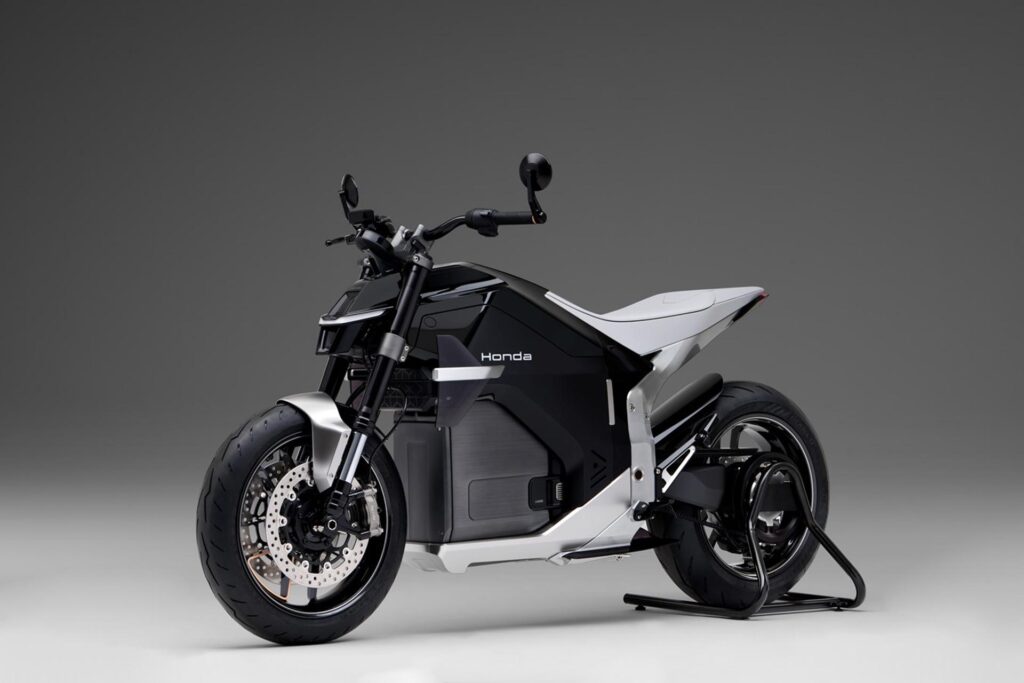In an industry rich with legacy and known for roaring engines and the thrill of combustion, Honda’s decision to release its first electric motorcycle marks a pivotal shift toward a more sustainable future. This move from the Japanese automotive giant signals not only a commitment to reducing environmental impact but also a shift in the motorcycle market as manufacturers respond to growing consumer demand for electric vehicles (EVs). Honda, a brand synonymous with reliable, high-performance motorcycles, is poised to change the game by bringing an electric option to the masses.
Honda’s electric motorcycle is more than just a new product; it’s a statement. It represents the company’s broader vision for sustainable transportation, aligning with global goals to reduce emissions and embrace renewable energy. For those who have followed Honda’s journey in automotive innovation, this transition feels both inevitable and groundbreaking. Here’s an in-depth look at how Honda is preparing to bring its first electric motorcycle to the market, and what it means for the industry, the environment, and the riders of tomorrow.
Honda’s motorcycle history dates back to the 1940s, with its first mass-produced bike, the Dream D-Type, in 1949. Over the decades, Honda has built a reputation for producing durable, innovative, and affordable motorcycles. Models like the Honda CB750, CRF series, and the iconic Gold Wing have set standards across the industry. Today, Honda is the world’s largest motorcycle manufacturer, producing millions of bikes annually and serving riders in every corner of the globe.
Honda’s journey into EVs, however, started relatively recently compared to its long-established combustion engine lineup. In response to increasing regulatory pressure and environmental concerns, Honda has set ambitious goals to reach carbon neutrality by 2050. As part of this commitment, the company pledged to electrify its lineup across cars, motorcycles, and power products. The upcoming electric motorcycle is Honda’s first major step toward a two-wheeled, electric-powered future, showcasing its dedication to sustainable innovation.
The environmental benefits of electric motorcycles are clear. Transportation is one of the largest contributors to greenhouse gas emissions, and motorcycles are no exception. Traditional motorcycles may produce fewer emissions than cars, but they’re still a source of pollution. Electric motorcycles can significantly reduce CO2 emissions, air pollution, and noise, making them a more eco-friendly choice, especially in densely populated urban areas.
Beyond the environmental impact, electric motorcycles also offer unique benefits to riders. They provide instant torque, allowing for rapid acceleration, and they require less maintenance than their combustion-engine counterparts. Electric motorcycles are often quieter, which makes them ideal for city commuting without contributing to noise pollution. For younger, environmentally conscious consumers, these advantages make electric motorcycles an attractive option.
Honda isn’t entering the electric motorcycle market on a whim. The company has laid out a clear vision to make electric motorcycles accessible and appealing to a wide audience. Honda’s strategy involves leveraging its decades of expertise in motorcycle manufacturing to create an electric bike that doesn’t compromise on quality, performance, or affordability.
While other manufacturers have targeted niche markets with high-performance or luxury electric motorcycles, Honda aims to bring a practical, affordable option to the masses. By focusing on a commuter-friendly model, Honda is targeting riders who want a reliable, efficient, and eco-conscious mode of transportation for daily use. This approach aligns with Honda’s longstanding philosophy of creating products “for the joy and freedom of mobility.”
Though specific details of Honda’s first electric motorcycle are still under wraps, there are several key features that Honda enthusiasts can expect based on the brand’s emphasis on quality and performance. Honda has promised a bike that will blend practicality with cutting-edge technology, setting a new standard in electric motorcycles. Some anticipated features include:
– Range and Battery Life: Honda’s electric motorcycle is likely to prioritize a range that’s suitable for urban commuting, potentially between 100-150 kilometers on a single charge. Honda’s battery technology will likely focus on longevity and efficiency, making the bike suitable for daily use without constant recharging.
– Fast-Charging Capability: Honda is expected to equip its electric motorcycle with fast-charging technology, allowing riders to recharge their bikes quickly at public charging stations. This feature will be crucial for city riders who need to top off their batteries throughout the day.
– Swappable Battery System: Honda has been a proponent of battery-swapping infrastructure, especially in markets like Japan, where the company has partnered with other manufacturers to develop standardized swappable batteries. This system allows riders to swap out depleted batteries for fully charged ones at designated stations, reducing downtime and enhancing convenience.
– Lightweight Design and Frame: In keeping with Honda’s tradition of performance, the electric motorcycle will likely feature a lightweight frame and design, improving handling and agility. This focus on design could make it an attractive option for both seasoned riders and newcomers.
While Honda’s electric motorcycle is an exciting step forward, the shift to electric motorcycles comes with its own set of challenges. Infrastructure for charging and battery-swapping is still underdeveloped in many regions, and Honda will need to work with governments and other companies to create a supportive network. Additionally, range anxiety remains a concern, particularly for riders who may not have convenient access to charging stations.
Another challenge is the cost. Though Honda aims to make the bike affordable, electric motorcycles currently have higher price tags than their combustion-engine counterparts due to battery costs. However, as battery technology continues to improve and production scales up, these costs are expected to come down, making electric motorcycles more accessible.
As the world’s largest motorcycle manufacturer, Honda’s entry into the electric motorcycle market is expected to have a significant impact. Honda’s reputation for reliability and affordability gives it a unique advantage in attracting mainstream consumers. By committing to electric motorcycles, Honda is setting an example for other manufacturers, pushing the industry toward a more sustainable future.
Honda’s decision also reflects the growing demand for sustainable transportation options in countries like India and Southeast Asia, where motorcycles are a primary mode of transport. By introducing an electric option, Honda can
No comments yet.







